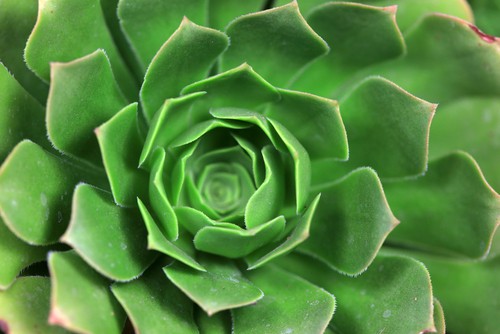Black spots on succulent leaves are a common problem that can be caused by a variety of factors. Succulents are known for their hardiness and low maintenance, but they can still be susceptible to disease and environmental stress.
Identifying the cause of black spots on succulent leaves is the first step in preventing and treating the problem.
There are several possible causes of black spots on succulent leaves, including overwatering, sunburn, pests, and fungal infections. Overwatering is one of the most common causes of black spots, as it can lead to root rot and other fungal infections.
Sunburn can also cause black spots, especially if the plant is exposed to direct sunlight for extended periods of time. Pests like mealybugs, scale insects, and spider mites can also cause black spots, as they feed on the plant’s sap and weaken its immune system.
Key Takeaways:
- Black spots on succulent leaves can be caused by overwatering, sunburn, pests, and fungal infections.
- Prevention is key to avoiding black spots on succulent leaves. This includes proper watering, providing adequate shade, and regularly inspecting plants for pests.
- Treating black spots on succulent leaves depends on the cause of the problem. Options include removing affected leaves, treating with fungicides or pesticides, and adjusting watering and light conditions.
Similar posts:
- Black Spots on Spinach Leaves
- Black Spots on Schefflera Leaves
- Black Spots on Sage Leaves Safe to Eat
Identifying Black Spots on Succulent Leaves
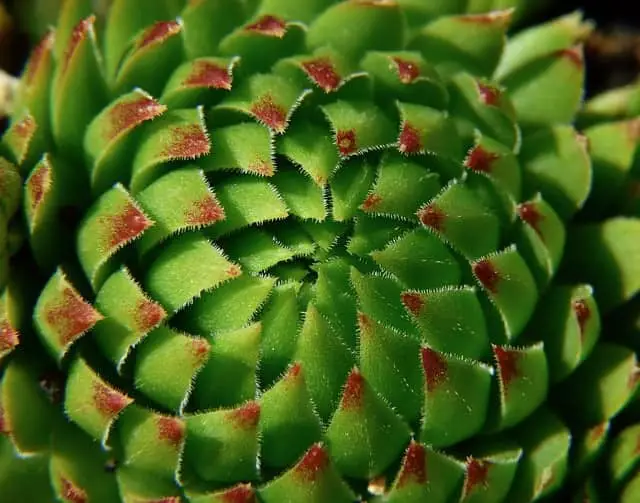
Black spots on succulent leaves can be a sign of several issues, including pests, fungal or bacterial infections, sunburn, or overwatering. It is important to identify the cause of the black spots to treat the problem effectively.
Healthy succulent leaves are usually plump, firm, and evenly colored. If you notice any dark spots or discolorations on the leaves, it is a sign that something is wrong. The size and number of black spots on succulent leaves can vary depending on the underlying cause.
If the black spots are small and scattered, it may be a sign of pest infestation. Check the leaves carefully for signs of spider mites, mealybugs, or scale insects. These pests can damage the leaves and cause black spots to form.
On the other hand, if the black spots are large and irregular in shape, it may be a sign of fungal or bacterial infection. These infections can cause the leaves to become soft and mushy, and the black spots may spread quickly.
If the black spots are dry and crispy, it is likely that the leaves have been sunburned. Succulents are adapted to thrive in bright sunlight, but too much direct sunlight can cause damage to the leaves.
Overwatering is another common cause of black spots on succulent leaves. If the leaves are soft and mushy, and the black spots are concentrated around the base of the plant, it may be a sign of root rot caused by overwatering.
In summary, identifying the cause of black spots on succulent leaves is crucial to maintaining healthy plants. By carefully examining the leaves and considering factors such as pests, infections, sun exposure, and watering habits, you can take the necessary steps to treat the problem and prevent further damage.
Black Spots on Succulent Leaves – 3 Common Problems
Succulents are prized for their unique appearance and low maintenance requirements. However, they can develop black spots on their leaves, which is a common problem that can be caused by a variety of factors. In this section, we will discuss the most common causes of black spots on succulent leaves.
1. Overwatering and Root Rot

Overwatering is one of the most common causes of black spots on succulent leaves. Succulents are adapted to arid conditions and do not require frequent watering. When succulents are overwatered, the roots can become waterlogged and begin to rot.
This can lead to black spots on the leaves and other symptoms such as wilting and yellowing.
To prevent overwatering, it is important to use well-draining soil and to allow the soil to dry out completely between waterings. It is also important to avoid watering the leaves directly, as this can promote fungal growth.
2. Sunburn and Temperature Changes
Succulents require plenty of sunlight to thrive, but excessive sunlight can cause sunburn and black spots on the leaves. Sunburned leaves may appear brown or black and may eventually fall off.
Temperature changes can also cause black spots on succulent leaves. When succulents are exposed to sudden temperature changes, they may develop black spots on the leaves.
To prevent sunburn, it is important to provide succulents with plenty of sunlight, but to also provide some shade during the hottest part of the day. It is also important to avoid exposing succulents to sudden temperature changes, such as moving them from indoors to outdoors.
3. Pests and Diseases

Pests and diseases can also cause black spots on succulent leaves. Common pests that can cause black spots include aphids, mealybugs, and spider mites. These pests feed on the leaves of succulents and can cause black spots to appear.
Fungal diseases can also cause black spots on succulent leaves. Common fungal diseases that can cause black spots include tospovirus, black ring virus, and mold. These diseases can be difficult to treat and may require the use of fungicides.
To prevent pest infestations, it is important to keep succulents clean and free of debris. It is also important to avoid overwatering, as this can promote fungal growth. If pests or diseases are suspected, it is important to take action quickly to prevent the problem from spreading.
Preventing Black Spots on Succulent Leaves
Succulents are low-maintenance plants that can thrive in various conditions, but they are still susceptible to black spots on their leaves. These unsightly spots can be caused by a variety of factors, including overwatering, poor soil mix, exposure to extreme temperatures or sunlight, and pest infestations.
However, with proper care and attention, you can prevent black spots from forming on your succulent leaves.
1. Proper Watering and Soil Mix
Overwatering is one of the most common causes of black spots on succulent leaves. To prevent this, it is important to use a well-draining soil mix that allows excess water to drain away from the roots. A good succulent potting mix should contain a mix of perlite, sand, and peat moss to provide adequate drainage and aeration.
In addition, it is important to water your succulents sparingly, allowing the soil to dry out completely between watering sessions. When you do water, make sure to water deeply, so that the water reaches the roots. Avoid getting water on the leaves, as this can cause them to rot and develop black spots.
2. Appropriate Sunlight and Temperature
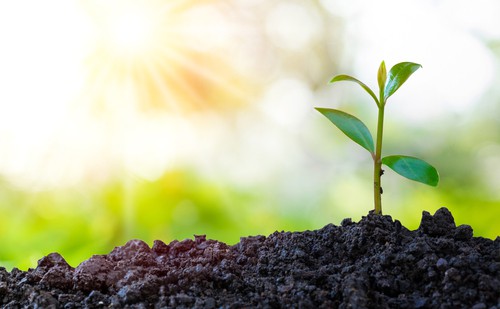
Succulents are sun-loving plants, but excessive exposure to direct sunlight can cause their leaves to develop sunburn and black spots. To prevent this, it is important to gradually acclimate your succulents to brighter light by gradually increasing their exposure over several days.
Additionally, you should provide your succulents with some shade during the hottest part of the day, especially during the summer months.
Temperature is also an important factor to consider when caring for succulents. Most succulents prefer temperatures between 60 and 80 degrees Fahrenheit, and they can be damaged by exposure to frost or extreme heat.
To prevent black spots from forming on your succulent leaves, make sure to keep them in a location with stable temperatures and avoid exposing them to extreme weather conditions.
3. Pest and Disease Control
Pests and diseases can also cause black spots to form on succulent leaves. To prevent this, it is important to regularly inspect your plants for signs of infestation and take appropriate measures to control them.
Common pests that can affect succulents include mealybugs, spider mites, and scale insects. You can control these pests by using neem oil or insecticidal soap and spraying your plants regularly.
Fungal infections can also cause black spots on succulent leaves. To prevent this, make sure to keep your plants dry and avoid getting water on the leaves. If you do notice signs of fungal infection, you can treat your plants with a fungicide or by removing affected leaves.
Treating Black Spots on Succulent Leaves
Black spots on succulent leaves are a common problem that can be caused by various factors. The good news is that the issue can be treated with proper care and attention. In this section, we will discuss some effective ways to treat black spots on succulent leaves.
1. Removing Affected Leaves and Stems
The first step in treating black spots on succulent leaves is to remove the affected leaves and stems. This will prevent the spread of the disease to healthy parts of the plant.
Use a pair of sterilized scissors or a sharp knife to cut off the affected parts. Make sure to cut as close to the healthy part as possible. Dispose of the affected parts in a sealed plastic bag and throw them away.
2. Adjusting Watering and Sunlight Exposure
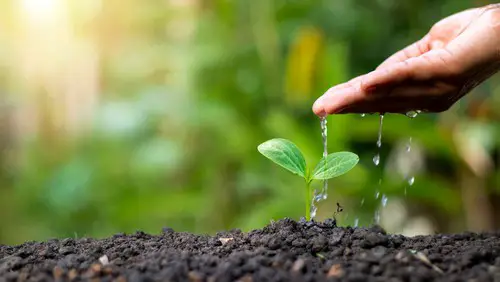
Overwatering is one of the main causes of black spots on succulent leaves. To prevent this, adjust the watering schedule and make sure the plant is not overwatered. Succulents need well-draining soil and should not be left to sit in water. Ensure that the pot has adequate drainage and that the soil is dry before watering again.
Sunburn can also cause black spots on succulent leaves. If the plant is exposed to too much direct sunlight, move it to a shadier spot. Gradually increase the amount of sunlight the plant receives until it is acclimated to the new conditions.
3. Using Pesticides and Fungicides
If the black spots are caused by pests or fungus, use pesticides or fungicides to treat the issue. Neem oil is a natural pesticide that can be used to treat pests like mealybugs and aphids. Rubbing alcohol can also be used to remove pests from the plant.
Fungicides like copper fungicide or sulfur can be used to treat fungal infections. Follow the instructions on the label carefully and apply the fungicide to the affected areas.
4. Repotting
If the succulent is overwatered or has poor drainage, repotting may be necessary. Choose a pot with adequate drainage and use a well-draining soil mix. Carefully remove the plant from its current pot and inspect the roots for any signs of rot. Cut off any affected roots and repot the plant in the new pot.
5. Inspect
Inspect the plant regularly for any signs of black spots or other issues. Early detection can prevent the spread of disease and ensure the plant remains healthy.
Conclusion
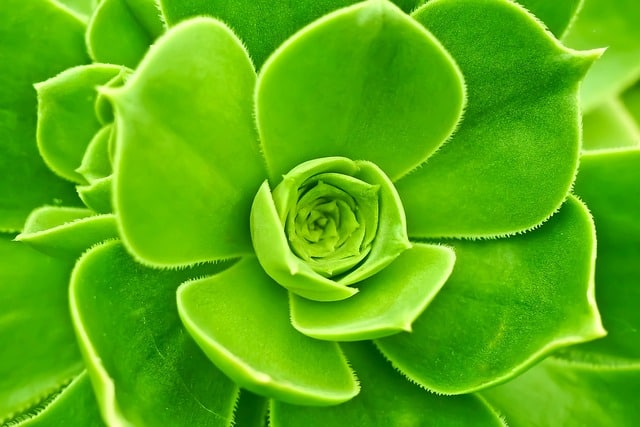
In conclusion, black spots on succulent leaves can be caused by a variety of factors, including over-watering, sunburn, pests, and viral infections. It is important to identify the underlying cause of the black spots in order to properly treat the issue.
Over-watering is a common cause of black spots on succulent leaves. Succulents store extra water in their leaves, roots, and stems, so too much water can cause the plant’s water storage tissue to bloat and explode, leading to black spots on the leaves.
To prevent over-watering, it is important to allow the soil to dry out completely between waterings.
Sunburn can also cause black spots on succulent leaves. Succulents are adapted to thrive in arid conditions and can be sensitive to intense sunlight. To prevent sunburn, it is important to gradually acclimate the plant to brighter light conditions and provide adequate shade during the hottest part of the day.
Pests such as mealybugs and aphids can also feed on succulent leaves and leave numerous dark marks. It is important to regularly inspect succulent plants for signs of pest infestation and treat promptly with insecticidal soap or neem oil.
Finally, viral infections can also cause black spots on succulent leaves. Unfortunately, there is no cure for viral infections, and infected plants should be removed to prevent the spread of the virus to other plants.
Overall, proper care and attention can help prevent black spots on succulent leaves. By identifying the underlying cause and taking appropriate action, succulent plants can thrive and remain healthy for years to come.
Frequently Asked Questions
How can I treat spots on my succulent leaves?
Treatment for black spots on succulent leaves depends on the cause of the spots. If the spots are caused by overwatering, stop watering the plant and allow the soil to dry out completely before watering again.
If the spots are caused by a fungal or bacterial infection, remove the affected leaves and treat the plant with a fungicide or bactericide. If the spots are caused by pests, remove the pests and treat the plant with an insecticide.
What causes spots on succulent leaves?
Black spots on succulent leaves can be caused by a variety of factors, including overwatering, fungal or bacterial infections, pests, sunburn, and succulent edema.
Are black spots on succulent leaves harmful?
Black spots on succulent leaves are generally not harmful to the plant itself, but they can be unsightly. However, if the spots are caused by a fungal or bacterial infection, they can spread to other parts of the plant and cause more serious damage.
How do I prevent black spots on my succulent leaves?
To prevent black spots on succulent leaves, make sure to water the plant only when the soil has completely dried out. Avoid getting water on the leaves, as this can promote fungal and bacterial growth.
Provide the plant with adequate sunlight, but avoid exposing it to direct sunlight for extended periods of time, as this can cause sunburn.
Can succulent edema cause black spots on leaves?
Yes, succulent edema can cause black spots on succulent leaves. Succulent edema occurs when the plant takes in more water than it can use, causing the leaves to swell and develop black spots.
How do I get rid of rust spots on my succulents?
To get rid of rust spots on succulent leaves, remove the affected leaves and treat the plant with a fungicide. Make sure to follow the instructions on the fungicide carefully to avoid damaging the plant.

Hey, I’m Lisa and I’ve been an avid gardener for over 30 years. I love writing, talking and living in the garden! Feel free to connect with me on my socials below

